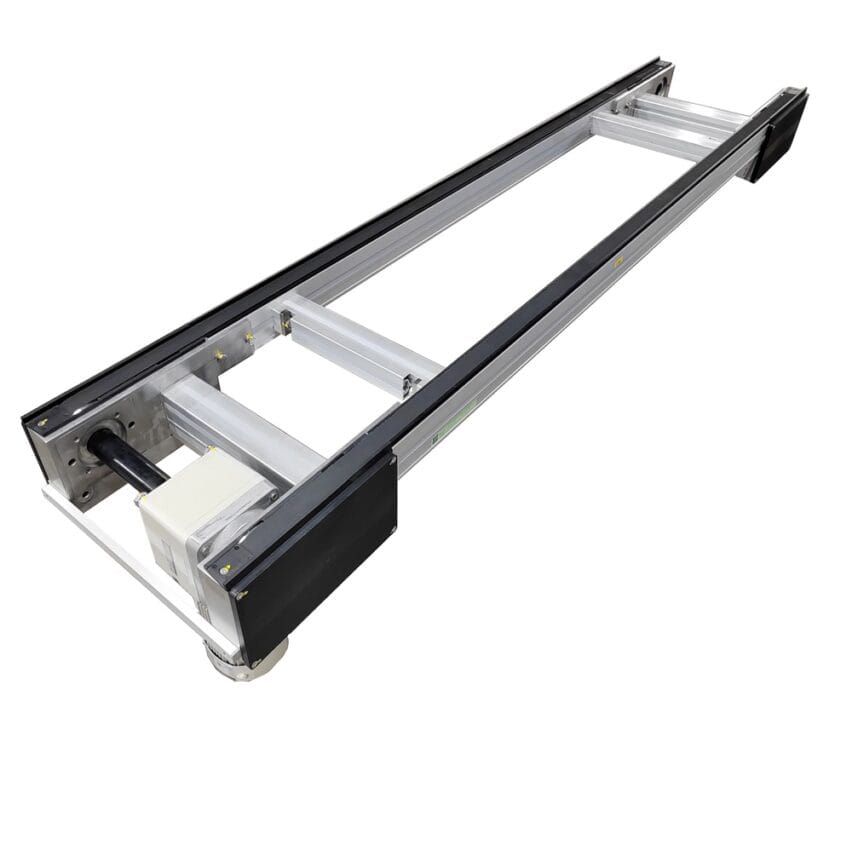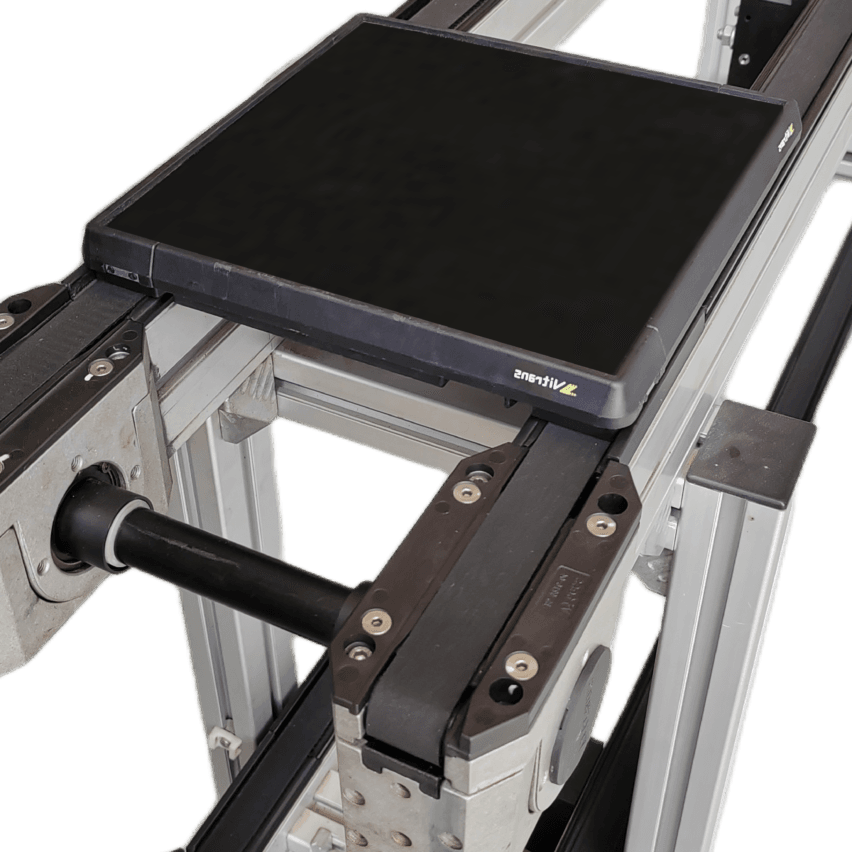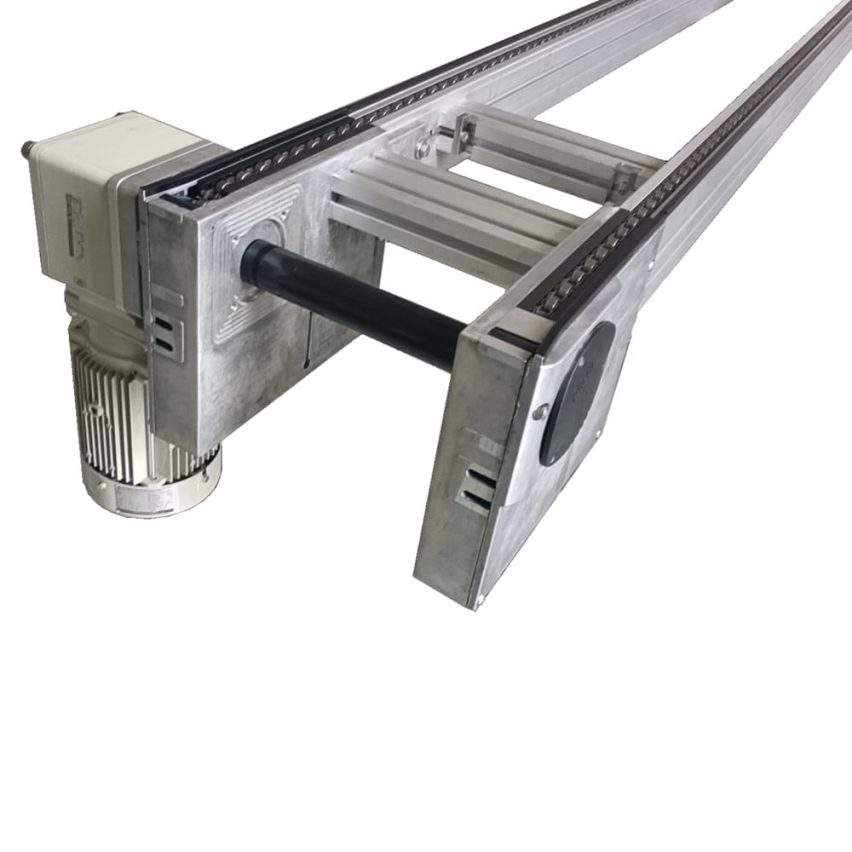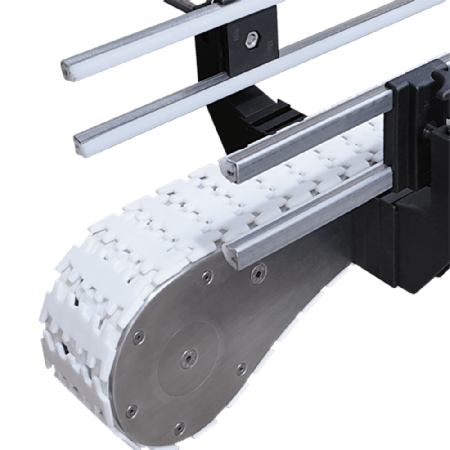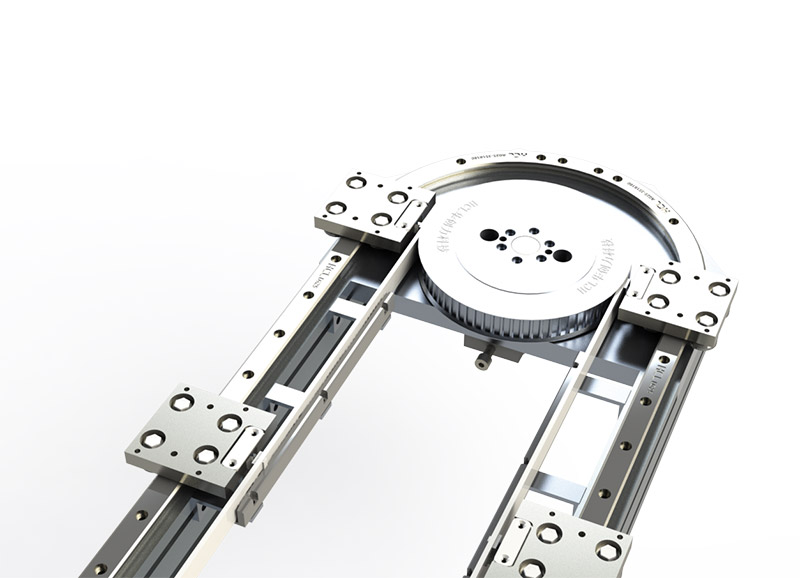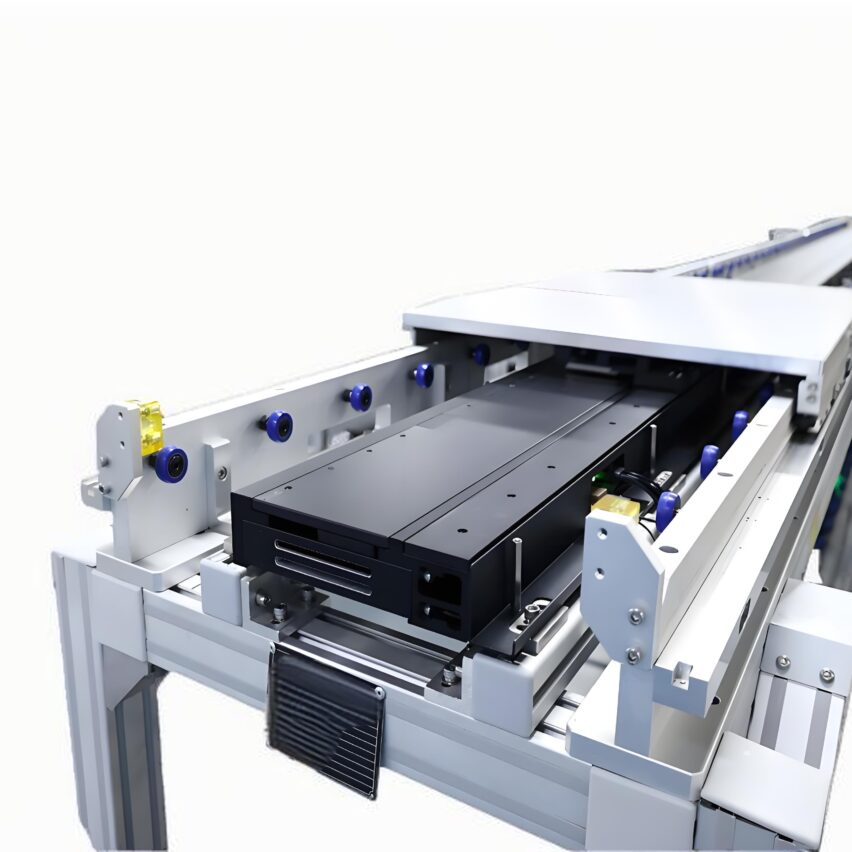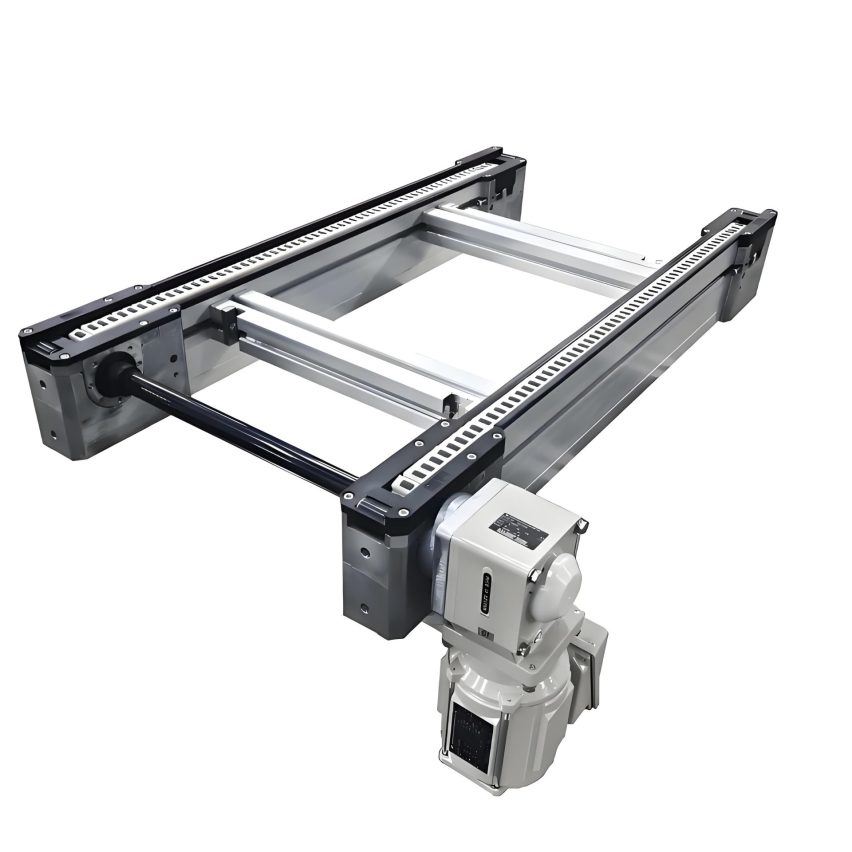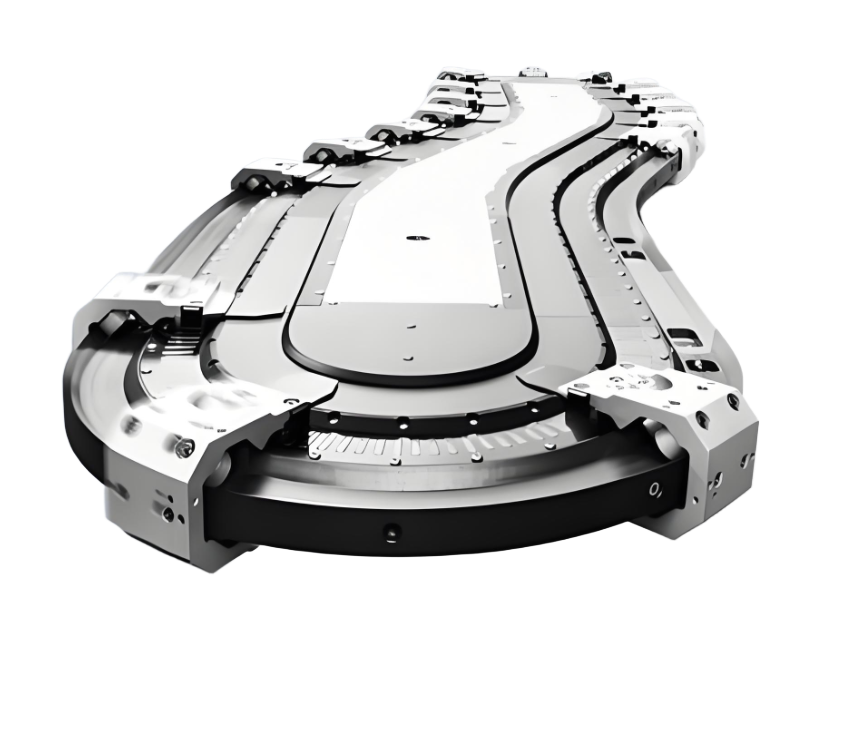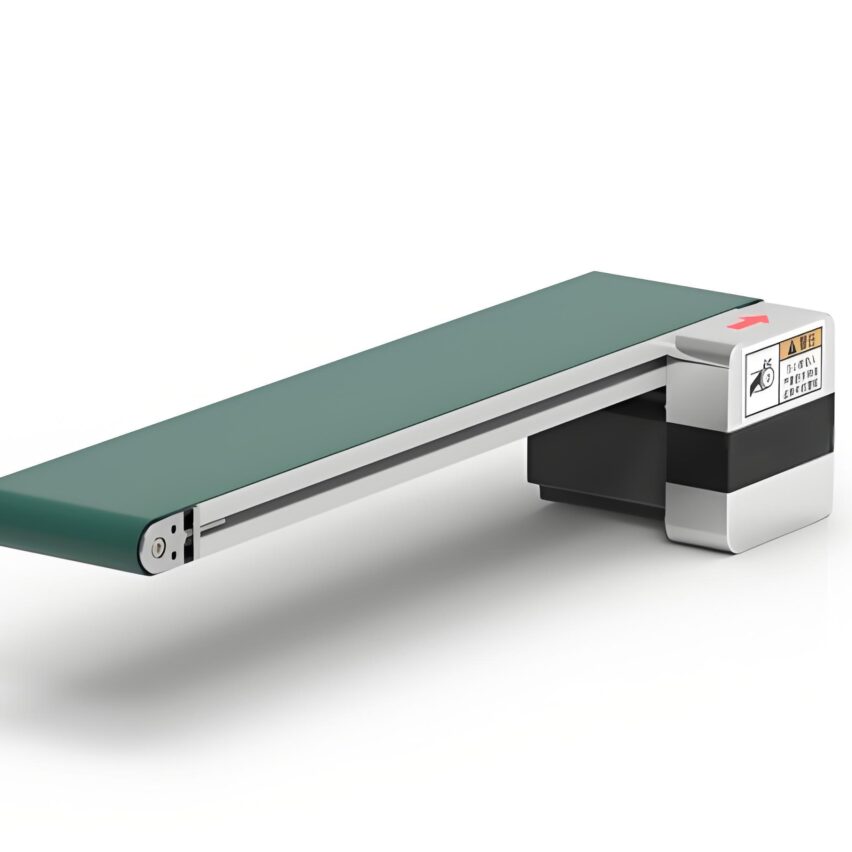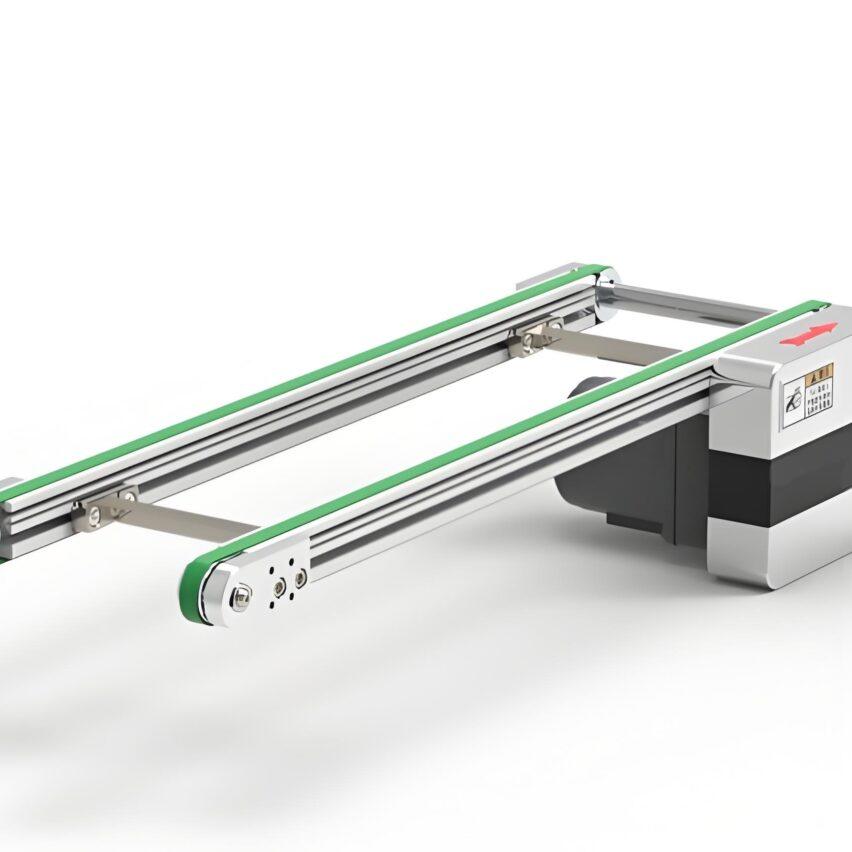The work plate conveyor line is like an invisible artery in the modern manufacturing industry. It is not only a transmission channel for materials, but also an intelligent link that connects the whole production process. With the advancement of Industry 4.0, this system, which combines mechanical precision and digital control technology, is reconfiguring the boundaries of production efficiency and flexibility.
The core value of the pallet conveyor is that it solves the problem ofContinuity challenges in the production process--Upgrading from the traditional "breakpoint operation" of manpower handling toAutomated, metronomic and coherent production modelThis shift has allowed modern factories to remain competitive. This shift has allowed modern factories to remain competitive against a backdrop of escalating labour costs.
I. Core Structure and Working Principle: A Mechanical Symphony of Precision and Synergy
-
Physical magic of the multiplier chain
The core power of the pallet conveyor line comes from the speed multiplier chain."Differential speed increase" design. The physical principles can be summarised as follows:- When the chain is running at speed v₀, the rollers rotate due to contact with the guide rail
- The actual speed of the stacked tooling boards reaches2-3 times the chain speed(v=(1+D/d)v₀, D is the roller diameter, d is the roller diameter)
- This design allows the workpiece to be conveyed at high speeds with low-speed drives, significantly reducing energy consumption and mechanical wear and tear.
-
Intelligent carrier role for workplace panels
Far from being an ordinary pallet, the workpiece board is a collection ofCarrying, powering, data interactionAn intelligent platform in one:- Material innovation: Plywood + PVC composite board as substrate, covered with pyramid anti-slip rubber skin or PP wear-resistant board (anti-static version of resistance value <10⁹Ω)
- Functionality Expansion: Embedded copper alloy electrode sheet, achieved by contact with the conductive wheel of the conveyor line.mobile powerSupport for power tools and sensor operation at assembly stations
- positioning enhancementHigh-precision limit chucks (±0.05mm) with tapered locating pins ensure that precision parts are assembled without offset.
-
Dynamic Control System: Precise Command of the Gas-Electric Hybrid
- Pneumatic stops are driven by cylinders to achieve flexible stopping of the workpiece, spring-loaded buffers to absorb the impact, and hydraulic vibration absorbers for heavy-duty work.
- PLC system through the photoelectric sensor real-time monitoring of the position of the workpiece plate, dynamic adjustment of the blocker opening and closing, the error is controlled within ± 0.5mm.
- Variable-frequency motor drive system supports stepless speed regulation from 2-20 m/min to meet different production needs.
II. Core advantages of breaking through traditional bottlenecks
-
A revolution in efficiency leapfrogging
- Up to manual handling in a single hour5-10 timesThe system is designed to support 24-hour continuous operation
- The load of a single plate exceeds 240kg, and the maximum load of the whole line is 2200kg (e.g. engine gearbox assembly scenario).
- RFID technology to achieve the identity of the workpiece plate binding, MES system real-time tracking of production batches and process parameters
-
The basis for the realisation of flexible production
The pallet conveyor breaks down rigid production constraints through modular design:- Line width and height can be customised (typical height 750mm ± 250mm), the size of the work plate is designed flexibly according to the product characteristics.
- Supports horizontal circulation, vertical lifting, 180°turning track and Y-type separation layout (e.g. automatic separation of rework line and finished product line)
- Switching product models within 30 minutes by changing the jigs and fixtures of tooling boards to meet the needs of small quantities and multiple varieties.
-
Physical assurance of quality control
In scenarios such as automotive dashboard assembly:- Pneumatic clamp locks the workpiece with 0.3-0.5MPa pressure, eliminating vibration deflection in manual assembly.
- Visual inspection system (e.g. Cognex camera) to judge the assembly status in real time, with a false judgement rate as low as 0.01%
- The turntable mechanism supports 90-120° rotation of the workpiece, avoiding the risk of knocking caused by manual turning.
III. Application scenarios: coverage from precision electronics to heavy manufacturing
-
New Energy Battery PACK Line
The anti-static work plates carry the battery modules and are synchronised during the conveyor process:- Cell voltage and internal resistance detection (data transfer via work plate electrodes)
- Laser welding positioning (accuracy ±0.1mm)
- Air tightness test
Full isolation from static risk, meets UL1642 safety standards
-
Automotive engine assembly
For heavy-duty parts challenges:- Adopt 4560 heavy-duty outriggers and 4590 reinforced frame, the distance between the outriggers ≤ 2000mm.
- Hydraulic self-balancing mechanism is added to the work plate to ensure that the engine remains level during transport.
- Accurate docking of cylinder block and cylinder head in the air with lifting robot.
-
3C Electronic Intelligent Assembly
In a mobile phone motherboard production line:- Magnesium-aluminium alloy work plates (5-15kg) for high-frequency fast flow
- Workstation integrated electric screwdriver with torque accuracy control at 3%
- Temperature and humidity sensors monitor the solder paste printing environment and upload data to MES in real time.
IV. Future evolution: the leap to cognitive manufacturing
Currently work plate conveying systems are undergoing a third evolution - from purely mechanical conveying toIntegrated "sense-decide-execute" platforms. I think its technological breakthroughs will focus on three dimensions:
-
Upgraded autonomous decision-making capacity
By embedding an AI edge computing module, the conveyor line can analyse the status of equipment in real time:- Predictive maintenance: based on vibration data to predict the life of roller bearings, failure warning accuracy increased by 40%
- Dynamic beat optimisation: automatic speed adjustment according to station blocking, balancing line efficiency.
-
Enhanced security for human-computer collaboration
A new generation of collaborative systems will push the limits of traditional security fences:- 3D vision sensors for real-time monitoring of manual work zones and millisecond braking in case of sudden intrusion.
- Force-feedback manipulator linked with the conveyor line, to achieve the workpiece man-machine co-carrying.
-
Digital Twin In-Depth Applications
The integration of physical systems with virtual models will create new value:- Layout scenarios previewed in FlexSim, U-shaped line design shortens 20% material movement paths
- Through the virtual debugging to verify the conversion plan in advance, the production line switching time is compressed to the original 30%.
Key questions to ask yourself about work plate conveyor lines
Q1:How does the work plate balance the lightweight and heavy-duty needs?
It adopts layered composite structure: the surface layer is 4mm anti-static bakelite board, the middle layer is carbon fibre reinforced substrate (bending strength 350MPa), and the bottom layer is covered with 2mm steel liner. In the new energy battery pack transport, the 1.2×0.8m workpiece plate achieves the limit index of 18kg self-weight/300kg load-bearing.
Q2: Why are multiplier chains irreplaceable in precision assembly?
Its core strengths areDynamic precision control capabilityOnce the pallet has been positioned by the stopper, the rollers underneath continue to idle, keeping the pallet in a "floating standby" state. Once the stopper is released, the pallet can be accelerated to working speed instantly, avoiding the inertial displacement that occurs when a conventional conveyor belt starts and stops.
Q3: How to ensure system stability in extreme environments?
Solution in nuclear industry scenarios: conveyor frame covered with corrosion-resistant rubber layer (resistant to pH 1-14 media) and work plates lined with Hastelloy. The lifting manipulator is operated by a remote vision and force sensing system and operates continuously throughout the year in an irradiated environment of 15 kGy/h.
The history of the evolution of the pallet conveyor line is the quest of the manufacturing industry for the"Efficiency Boundary" and "Flexibility Limit"The Epitome. When mechanical precision meets digital intelligence, this seemingly mundane conveyor line has become the invisible engine driving the industrial revolution.

